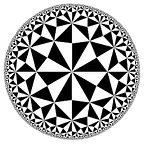Summing the discrete using Calculus[Beauty of Geometric series part-2]
Last time we calculated sums finite and infinite, applied calculus and counted using the geometric series. This time we will learn how we can apply derivatives onto the finite geometric series for evaluating other discrete sums. The main prerequisites of this article would be knowledge of the binomial theorem and basic differential calculus.
We start by considering a finite geometric progression of the form,
If we were to differentiate this polynomial and multiply the resulting expression by x,
Notice that the coefficients of the polynomial transformed to match the exponent of the monomial to which the factor is attached to. If we were to repeat the operation again..
We can now pick up on a pattern that every time we differentiate the polynomial and multiply by x, we transform the sequence of coefficients of the polynomial one power higher than it was before.
Now to reduce repetition, I introduce a new mathematical object known as an operator. An operator in this context means a function which maps a polynomial to another polynomial by a rule. The operation we keep doing “Multiply by x and differentiate” is captured by the following object:
You may be a bit afraid of what the derivative symbol would mean without a function for it to eat. The way to think about it as a placeholder which can take in a function and then apply a set of operations to it.
For brevity, we now start writing our sums in compact sigma notation. The transformation of polynomials under our operations also has a nice compact look in this notation:
Notice that evaluating the nth application of operator on sequence at x=1 produces the sum of first n, jth power whole numbers(eg: j=2 stands for sum first n squares).
Now, consider (1) again and observe that it a geometric progression and hence it’s sum is given (Discussed in prvs article):
With a few minor tweaks and a binomial expansion…
Putting all of this together, equate the geometric series in (1) using sigma notation with (3)
Apply the P operators j times in succession on both sides and using (2) on LHS,
Evaluate both sides at x=1,
Now we got an explicit formula for the sum of first jth power of integers.. I mean look at it.. it’s a bit funny in a way how we were able to use the calculus, a subject about the study of the continuous to sum the discrete. The big idea of the article ends here but, for the rest of the article, I show how the expression above is evaluated for some j values.
For j=0,
For j=1, i.e: sum of first ’n’ whole numbers,
Since,
Now, if we kept computing with the derivatives we could find formulas for expressions such as the “sum of first n cubes” or the “sum of first n fourth power whole numbers” and so on and so forth. Hope that was fun :-)
References
Me discovering a similar method for the first time and posting on MSE
An expanded form of composed P operator.. STIRLING NUMBERS???
